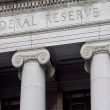Swedroe: Parrying An Attack On Fama
by Larry Swedroe, IndexUniverse
Third Avenue chairman’s attack on Eugene Fama arouses Larry Swedroe’s ire.
In Third Avenue Fund’s October 2013 annual report to shareholders, Chairman Marty Whitman severely criticized the research of recent Nobel Prize-winner Eugene Fama, calling it “utter nonsense, sloppy science, plain stupid, and unscholarly.” His letter included the following criticisms:
- “I am disappointed that a Nobel Prize was awarded to Eugene Fama, who studies only markets and prices; and whom, I daresay, does not focus on Form 10-Ks or the footnotes to a corporation’s audited financial statements.”
- “Modern Capital Theory (MCT) is of little or no help to those involved primarily with making investment decisions—value investors, control investors, most distress investors, credit analysts, and first and second stage venture capital investors.”
- “For the value investor, the market is a place for a bail-out at high prices (versus cost), not a place where underlying values are determined.”
- “The theory embodies the correct observation that almost no one outperforms relevant market indexes consistently. Consistently is a dirty word; it means all the time. In justifying and promoting Index Funds, MCT points to this failure of actively managed funds to outperform consistently. MCT acolytes, however, forget that many managed funds do tend to outperform relative benchmarks, over the long term, on average, and most of the time, notwithstanding their higher expense ratios.”
- “MCT cannot possibly be helpful almost all the time to those focusing primarily on investment decisions.”
Whitman went on to list problems such as:
- “An emphasis on short-termism. I think it is impossible to be market conscious about publicly-traded securities without emphasizing the immediate outlook at the expense of a longer-term view.”
- “Overemphasis on top-down macro-factors such as forecasts for the economy, interest rates, the Dow Jones Industrial Average, with a consequent de-emphasis of bottom-up factors such as the financial strength of an enterprise, the relationship of a security’s price to readily ascertainable net asset value (“NAV”), or the covenants in loan agreements.”
- “A belief in equilibrium pricing. An Outside Passive Minority Investors (OPMI) market price is believed to value correctly and OPMI market prices change as the market receives new information. Such a view, though widely held, is ludicrous. The fact that the common stocks of many well financed, growing, companies sell at 25 percent to 75 percent discounts from readily ascertainable NAV is mostly lost on finance academics who believe in efficient markets. They do not believe that such pricing can exist, though it does.”
Whitman went on to state:
“The Third Avenue portfolios are replete with the common stock issues of companies which have great financial strength and are selling in the OPMI market at 25 percent to 75 percent discounts from readily ascertainable NAV.”
He added: “Insofar as an OPMI’s ability to make sound investment decisions about underlying values exists, it is important to note that is easier and more productive to make such decisions today than it was in the Graham and Dodd era that ended in the 1970s. Starting with the Securities Act of 1964 as amended there has been a continuing disclosure explosion. It is now possible for trained OPMIs, like the various Third Avenue analysts and portfolio managers, to learn from public records tremendous amounts of pertinent information about a tremendous number of issuers. This disclosure explosion exists today not only for U.S. issuers, but also for companies listed or traded in Canada, Hong Kong, the UK and also for companies issuing American Depositary Receipts.”
That’s a long list of advantages Whitman suggests Third Avenue Funds has over investors that believe in Fama’s work.
We can test Whitman’s assertions, as Fama is the principal scholar whose groundbreaking work inspired the founding of Dimensional Fund Advisors (DFA). For many years, Fama—along with colleague Kenneth French—ran the research department at DFA, and he still serves on its board of directors and investment policy committee. (Full disclosure: My firm, Buckingham, recommends the use of DFA funds in construction of client portfolios.)
Morningstar provides us with returns for the 15 years ending Jan. 9, 2014, allowing us to make apples-to-apples comparisons between Third Avenue’s funds and similar funds run by DFA.
The Third Avenue Value Fund (TAVFX) is a global fund that Morningstar classifies as large value. Thus, we can compare its returns with those of the DFA Large Cap Value Fund (DFLVX) and the DFA International Value Fund (DFIVX). TAVFX had annualized returns of 7.50 percent, while the two DFA funds returned 7.67 percent and 7.47 percent, respectively.
In addition to all the advantages Whitman cited, because TAVFX is a global fund, it has the advantage of being able to shift its holdings anywhere in the world, wherever values are the best, while DFA’s DFLVX is restricted to buying U.S. stocks and DFA’s DFIVX cannot buy either U.S. stocks or emerging market stocks.
TAVFX returned 7.50 percent, underperforming DFLVX’s return of 7.67 percent by 17 basis points. It outperformed DFVIX’s return of 7.46 percent by just 4 basis points. And TAVFX underperformed a 50/50 weighting of the two DFA funds by 8 basis points. The comparison becomes even worse if we include DFA’s Emerging Markets Value Fund (DFEVX), which returned 13.12 percent.
We now turn to the performance of the Third Avenue Small Cap Value Fund (TASCX). Over the 15-year period, it had annualized returns of 9.13 percent. DFA’s Small Cap Value Fund (DFSVX) returned 11.90 percent, outperforming TASCX by 2.77 percentage points per year. I would add that while TASCX is mostly a domestic fund, it does have the freedom to buy international stocks. Morningstar showed that non-U.S. stocks currently made up about 6 percent of the fund’s holdings.
Again, Third Avenue being able to shift holdings whenever international stocks look like better values should be an obvious advantage for TASCX. Unfortunately, that advantage never showed up. Even worse is that DFA’s International Small Cap Value Fund (DISVX) actually slightly outperformed DFA’s U.S. small-cap value fund DFSVX, returning 12.01 percent.
We now turn to the Third Avenue International Value Fund (TAVIX), which Morningstar classifies as small/mid value. Since the fund doesn’t have a 15-year period, we’ll look at 10-year returns. Over the period, the Third Avenue fund returned 7.49 percent. Morningstar classifies the DFA International Small Cap Value Fund (DISVX) in the same category. As mentioned earlier, DISVX returned 12.01 percent, outperforming TAVIX by 4.52 percentage points.
Keep in mind that TAVIX also has the ability to shift assets around the globe, while the DFA fund doesn’t. About 12 percent of TAVIX’s current holdings were U.S. stocks. Obviously that advantage didn’t show up. We can add that TAVIX can also hold emerging market stocks. As noted earlier, DFA’s Emerging Markets Value Fund (DFEVX) returned 13.12 percent and DFA’s Emerging Market Small Cap Fund (DEMSX) returned 13.70 percent.
Thus, all three of Third Avenue’s value funds underperformed the funds that were based on research Whitman called “utter nonsense, sloppy science, plain stupid, and unscholarly.”
Again, TAVFX underperformed the average return of the two DFA large funds by 8 basis points. TASCX underperformed the DFA small value fund by 2.77 percentage points. And TAVIS underperformed the DFA international small value fund by 4.52 percentage points. That’s an average underperformance of 2.46 percentage points per year.
What accounts for the underperformance of the Third Avenue Funds? Unfortunately for Whitman, even its higher expenses don’t explain the full difference. TAVFX has an expense ratio of 1.1 percent, while the two DFA counterparts have expense ratios of 0.27 percent (DFLVX) and 0.43 percent (DFIVX), respectively—for an average of 0.35 percent, or 75 basis points less than TAVFX’s. TASCX has an expense ratio of 1.12 percent, while DFSVX’s expense ratio is 0.52 percent—60 basis points lower. And TAVIX’s expense ratio is 1.4 percent, while DISVX’s expense ratio is just 0.69 percent —71 percent lower.
Third Avenue’s funds have expense ratios that average 55 basis points higher than DFA’s, yet they underperformed by an additional 1.91 percent. So what accounts for the additional underperformance?
One explanation is that the Third Avenue Funds tend to hold significant cash positions, and over time, cash underperforms equities by wide margins. So unless the funds are highly successful at market timing, cash will be a major drag. At the time of this writing, the three Third Avenue Funds held cash positions of 12.0 percent (TAVFX), 10.2 percent (TASCX) and 11.1 percent (TAVIX).
If we assume that cash earned an average return of about 3.5 percent and stocks returned about 10 percent, a 10 percent average cash holding would reduce returns by about 0.65 percent. Adding that to the 0.55 higher expense ratio of 0.55 percent, we are still only able to account for 1.20 percent, or about half, of the 2.45 percent underperformance.
Another explanation might be in the in trading costs. As actively managed funds, you would expect that Third Avenue would have higher turnover than DFA. However, Third Avenue professes to be a long-term investor. And while it’s true that the turnover of its funds is relatively low compared with active funds, it’s still somewhat higher than the turnover of the comparable DFA funds.
Morningstar shows the average turnover of the three Third Avenue funds at about 30 percent. The DFA funds have turnover of slightly below 20 percent. Even if we assume a 10-percentage-point difference in turnover, and even a 1 percent cost of turnover, we have an additional burden of just 0.1 percent.
In other words, that leaves us being able to account for just 1.30 percent of the 2.45 percent underperformance.
And that brings us back to Whitman’s criticisms. They appear to be as filled with holes as the proverbial sieve. Fama’s research on how markets work and prices are set has led to the fund construction rules used by DFA. And DFA funds have clearly outperformed Third Avenue’s.
It also appears obvious that while on occasion Third Avenue might be able to identify a stock that is “mispriced/undervalued,” on average, Third Avenue has not been able to do so. In fact, after accounting for expenses and trading costs, it appears that its stock-picking efforts have subtracted value, not added it.
There’s one more point we need to cover regarding a major error in one of the aforementioned criticisms made by Whitman. “The theory embodies the correct observation that almost no one outperforms relevant market indexes consistently. Consistently is a dirty word; it means all the time. In justifying and promoting Index Funds, MCT points to this failure of actively managed funds to outperform consistently. MCT acolytes, however, forget that many managed funds do tend to outperform relative benchmarks, over the long term, on average, and most of the time, notwithstanding their higher expense ratios.”
The mistake Whitman makes here is in his use of the word “consistently.” Clearly there will be some funds that will manage to outperform their benchmarks over even long horizons. The problem is that there’s no evidence that funds are able to do so with more persistence than would be randomly expected.
That creates the problem of investors being unable to differentiate skill from luck. It’s also why the Securities and Exchange Commission requires the disclaimer about past performance—it is not reliable as a predictor of future performance. Even Whitman himself had this to say on the subject: “The gutters of Wall Street are strewn with the bodies of people who looked good for five years.”
One of our greatest economists, Paul Samuelson, provided us with the best way to think about Whitman and his criticisms: “A respect for evidence compels me to incline toward the hypothesis that most portfolio decision makers should go out of business—take up plumbing, teach Greek, or help produce the annual GNP by serving as corporate executives. Even if this advice to drop dead is good advice, it obviously is not counsel that will be eagerly followed. Few people will commit suicide without a push.”
Larry Swedroe is director of Research for the BAM Alliance, which is part of St. Louis-based Buckingham Asset Management.
Copyright © IndexUniverse














